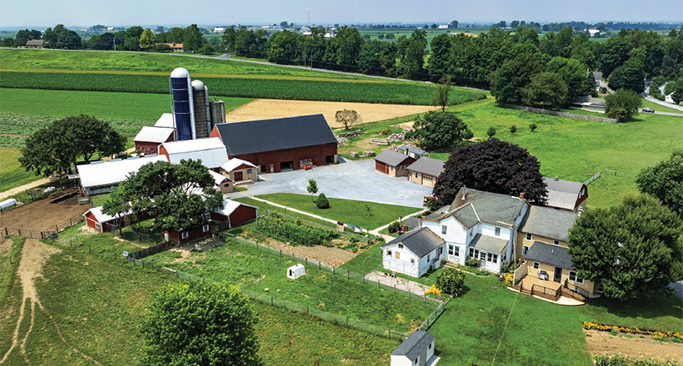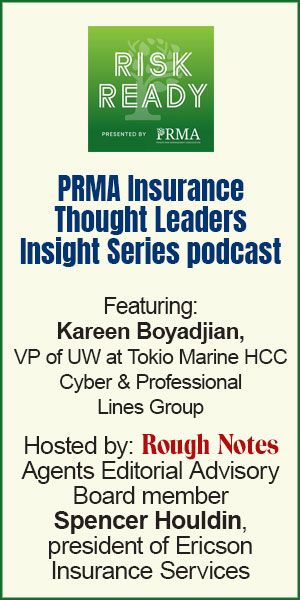Farm Ag conference sessions go “back to the basics”
By Christopher W. Cook
Earlier this year, I attended the Big “I” Indiana Farm Ag Conference. The discussion topics piqued my interest. While I spent most of my life in the Indianapolis suburbs, in 2013 I married a farmer’s daughter from Northwest Indiana.
I never did have a lot of farm experience or knowledge. My dad grew up on a farm in Northern Indiana, and we would shoot hoops sometimes in the old family barn while visiting relatives, but “farm activities” were rarely experienced. The handful of times I’ve helped my wife’s family when they were working in the field, I was used as a driver—picking up and dropping off people or food to different field locations. I also had my brief addiction to an Xbox One version of Farm Simulator during the COVID lockdown; I don’t think I’ve revisited my fields and animals since.
For anyone new to the insurance industry or new to a rural area and looking into insuring farms, I hope the information shared at the conference will be helpful. There was a lot of it, so this will be a two-parter.
Split between two sessions, Jeff Wilson, CPCU, AFIS, PFMM, senior vice president, small commercial field underwriting with Liberty Mutual, who also operates a 105-acre farm in Southern Indiana, kicked off the event by taking attendees “back to the basics.”
Homeowners or farm?
According to Wilson, farm policies can come across as challenging because they appear as a hybrid between a personal lines and commercial lines policy. For example, with numerous carriers, farm equipment would be excluded from a homeowners policy because it’s not for personal use.
“One claim saw a garage destroyed because hay had been stored in it and [then] it spontaneously combusted starting a fire. There was a farm exclusion,” Wilson said. “If there’s any chance of [a dwelling] being used for farming, schedule it like an outbuilding. Yes, it’s a little additional, but are you going to argue over the $40 premium or the $10,000 loss that’s not covered?”
Make sure to document when clients decline coverage, but the key is to make sure that you’re offering it.
Farm personal property can be scheduled or unscheduled (also referred to as blanket coverage). “We do blankets,” Wilson said. “On a blanket inventory, you go to every building [and take an inventory, including rusting equipment lying in a building’s corner]. Some companies will let [excluding old, unused equipment] slide, but are you going to be 100% confident that [the carrier will] let it slide because the contract says the inventory should make up any farm equipment or farm personal property?”
While taking inventory of farm vehicles like tractors and combines, don’t forget that nowadays there can be upwards of $100,000 of electronics inside them.
Not all farms are the same; they serve different purposes, and different tasks are performed at each one. So when should a client move from a homeowners policy to a farm policy?
“The most common question I’ve had in my career is, ‘should I put this farm on a homeowners policy or a farm policy?’ Well, since you called it a farm, I would put it on a farm policy,” Wilson explained. “I stress that because a lot of times people don’t have access to farm carriers [and are] writing farm risks on a homeowners.
“Yes, I feel that most carriers have farm liability that you can attach to a homeowners,” he added. “It can work, but there are dangers to that.”
For example, Wilson pointed out the importance of knowing your clients and their hobbies. “Goats have become popular. Once they get goats, they want to make cheese and soap. I call them hobbies, but a lot of times hobbies become businesses. And when they do that, it gets bigger than what the homeowners policy can cover. The farmowners policy can bend and flex better than the homeowners,” he said.
Something else to check for accuracy on a farmowners policy is the named and additional insureds, as a number of different entities can be used, like sole proprietors, LLCs, partnerships or trusts.
“One of your clients can have multiples of these on one policy,” Wilson said. “You may have land in one LLC. You might have a farm operation in another. You might have their trucking [operation] in a third.”
This is done for reduced tax exposure but also for reduced liability when it comes to lawsuits. “[If someone sues] the corporation, they can’t come after your [client’s] personal assets,” Wilson said.
A spreadsheet should be kept showing all the insurers and insureds involved and their connections with one another.
Modern outbuildings and other coverages
Over the years, “farm buildings have changed quite a bit,” Wilson said. “The farm shop that I grew up around was mainly under a shade tree outside [where you did] all your repairs. Now, the farm shop is a glorified man cave.
“When you look at the outside of a farm shop or pole barn, you think no big deal. But when you go inside, it’s as complicated and detailed as the inside of a home—kitchen, offices, bathroom facilities. And then you walk into the shop area, and it looks like your dealership. You’ve got a lot of things in the interior that are permanently attached, so when you do cost estimators, this should be included.”
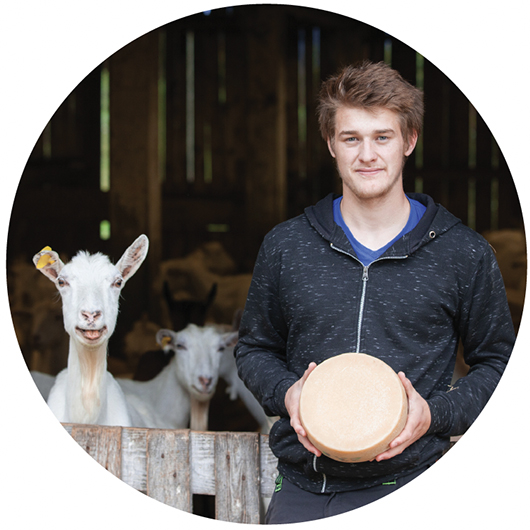
To complete a building estimate, you’ll need information like square footage, the type of construction, roofing materials, classification of the building, territory, and equipment inside the building. Online agricultural estimator tools are available from firms like CoreLogic, Verisk and e2Value.
“I always tell people, it’s called an ‘estimator’ for a reason; it’s not an ‘exactimator.’ You have to understand that you’re just trying to get in the ballpark. Then you sit down with your client and talk with them,” Wilson said.
When it comes to insuring livestock farms, technology has changed the way farms do business. “The crates, ventilation systems, the electrical and feeding systems, everything today is run off [smartphones],” Wilson said. “[The security camera will] alert you [on your phone] immediately if someone drives onto the driveway. This has become very valuable for us to monitor farms and what’s going on.”
“Farm buildings have changed quite a bit. The farm shop that I grew up around was mainly under a shade tree outside… .
Now, the farm shop is a glorified man cave.”
-Jeff Wilson, CPCU, AFIS, PFM
Senior Vice President, Small Commercial Field Underwriting
Liberty Mutual
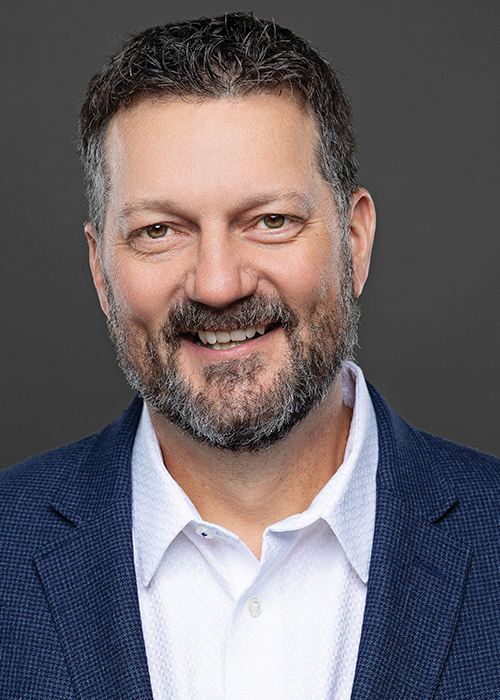
From a risk management perspective, make sure your clients are being cautious when using tools—like using pressure washers in a livestock building, for instance. “Underneath most of these buildings is a pit. Hog manure lets off methane. A slight spark from an electric motor [could] cause a flash fire,” Wilson said.
Which brings up a question: After a fire to a livestock outbuilding, do you need to add concrete to the estimate for a new barn structure? “I have yet to put back up a hog building that I did not have to excavate and redo the concrete. What’s inside concrete? Rebar [a steel reinforcing rod in concrete]. What happens when you have a fire that’s very intensely hot? It compromises steel. Don’t put another building on top of concrete that’s compromised,” Wilson informed.
When it comes to preparing estimates for farm outbuildings, there are always little things to consider. A question you may need to bring up with an underwriter regarding poultry buildings, for example, is: For an egg collection system that uses a conveyor belt that goes from one building to another, is that one building or two buildings? When it comes to grain bins, don’t forget about any equipment inside or upgrades included like walkways between multiple bins.
Add-on coverages commonly overlooked include debris removal, business income and extra expense, equipment breakdown, data equipment and software, and continuous operation disruption.
Another coverage to consider for farms is pollution, which “can be water, land, air or dust. People don’t think about that; [they] think about fish kills or a fuel spill. In insurance, we taketh away and giveth. Pollution is excluded but can be given back through endorsements,” Wilson said.
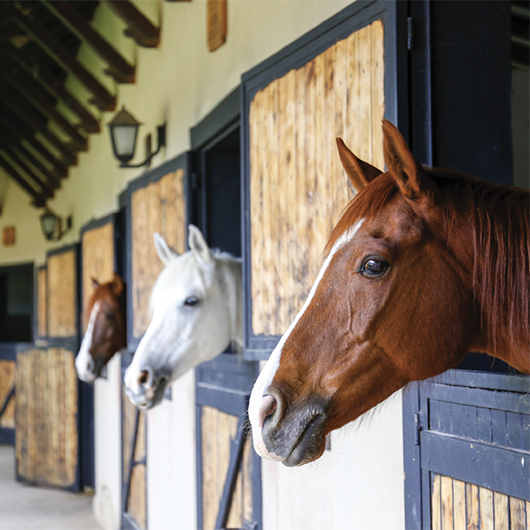
These endorsements include:
FL 04 03–Limited Farm Pollution Liability Coverage. Coverage is for the sudden and accidental dispersal or release of chemicals normally found in a farming operation. Sub-limit applies.
FL 04 30–Limited Farm Pollution Liability Extension Endorsement. This endorsement provides coverage for pollution incidents that occur in and around farm structures other than storage tanks.
“A lot of folks are starting to write stand-alone pollution policies on farms that have a lot of chemicals on site,” Wilson said.
Equine risks
Wilson noted that from a farmowners insurance policy standpoint, equine is unique. “Every carrier is doing it a little differently [regarding] horse activity, so read your contract,” he said.
Often, equine is not farming. “Many equine activities don’t meet the definition of farming,” Wilson said. “Most equine activities are treated as business. It’s a business transaction. I’m training your horse. I’m boarding your horse. I’m rehabbing your horse. You can go to a metropolitan area and there will be a stable. It’s not a farm; it’s a business, and they run it as such.”
Also, consider agritainment events that utilize the use of horses, like wagon, sleigh, and pony rides or petting zoos. Language used on the farmowners policy won’t cover those events. Also excluded would be horse racing and contests.
Types of coverage available for equine include:
- Property. This would include barns, stables and horse arenas; and like outbuildings and farm shops, modern ones tend to be more elaborate, possibly including things like pools for rehab. Other things to consider:
- If breeding is occurring on the property, don’t forget to include the equipment involved. Make sure to add spoilage coverage in case something happens to the stored semen supply.
- Be cautious if clients are performing welding on site, as horse barns contain lots of straw. Also, watch out for the use of heaters being used indoors. Infrared heaters that are hung opposed to on the floor are safer.
- Inland marine. If clients are participating in horse shows and transporting their animals, this would cover trailers. Today’s horse trailer can cost between $100,000 and $150,000 and when clients add extras like dressing areas for the animals, the vehicle could have a value upwards of $350,000. Make sure to have appropriate limits in place.
- Premises liability. “Horses are nice, right? You can go up and pet them. They will never bite you. They’ll never spit on you. They’ll never kick you. Nothing to worry about. And it’s only old people that run up to a horse and pet them; no children will ever do that,” Wilson said. “You’re going to get sued and you’re going to lose. If a child is injured on a farm or by livestock you own, [the case] will be in front of a jury trial. You need to make sure [horses are] endorsed in a policy, and you always want signed releases and waivers.”
- Animal mortality. “Some horses are worth over six figures because they’re racing and someone owns shares in the horse,” Wilson said. “If you’re not selling pet insurance, you’re missing a huge opportunity.”
- Care, custody and control. “If I’m rehabbing horses, I’m responsible for your horse when it’s in my possession. That’s called care, custody and control, and it’s excluded under most policies; you have to add it back. Not every company has this coverage,” Wilson said.
- Professional services. This coverage is suggested for clients who provide horse-related services like therapy or training.
- Additional coverages. These include business income, extra expense and workers compensation.
In the next article, we will discuss agritourism and workers compensation and employers’ liability for agribusinesses. For now, “may your crops be bountiful until we meet again.”

